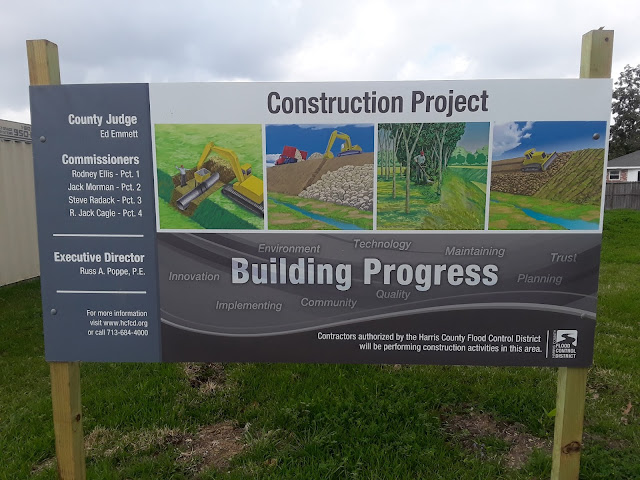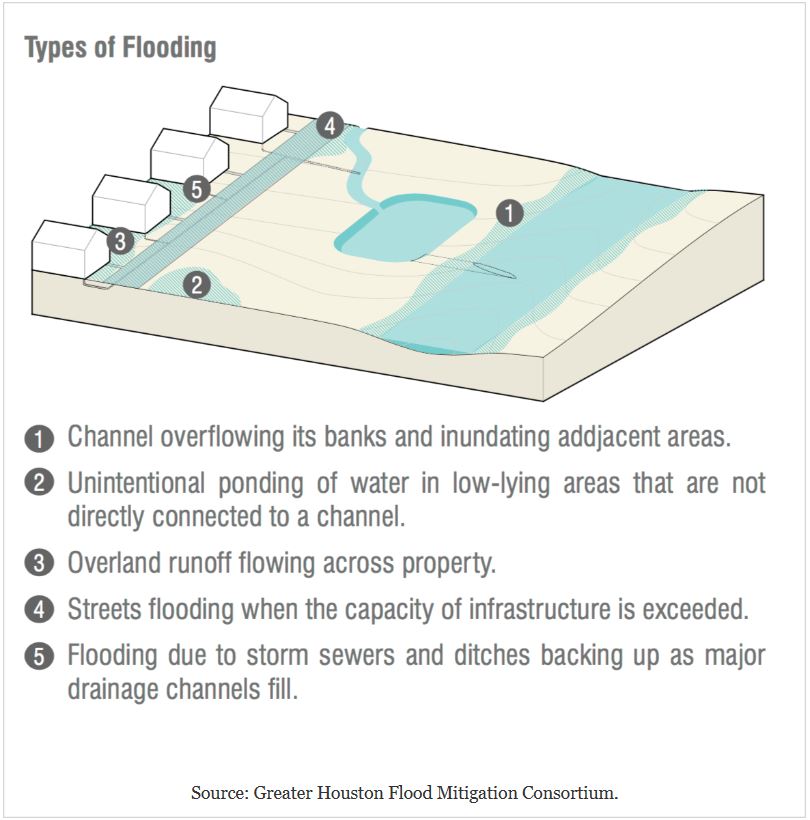All drainage features whether natural or man-made have flood plains, which are simply the adjacent low areas that fill with water during periods of overflow. Water overtopping the banks will move to all connected lower areas and remain until drained away by other features. However, these areas may not be mapped as flood plains on Flood Insurance Rate Maps (FIRM). As a result, residents and property owners may not realize that they are located in a flood zone. Although unmapped these areas will flood during times when the nearby drainage features overflow. This issue was featured in an April 1, 2018 front page article in the Houston Chronicle article entitled "Damage outside flood plain exposes flaws - 'We just need to start again,' says professor about maps designating flood-risk areas". The article was written by David Hunn, Matt Dempsey, and Mihir Zaveri and can be viewed at the link below: https://www.houstonchronicle.com/news/article/In-Harvey-s-delug





